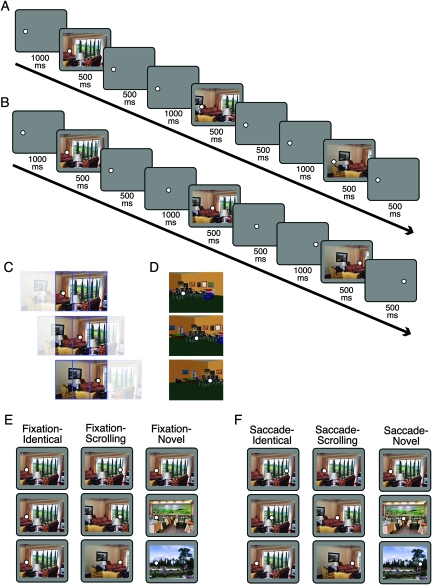Figure 1.
Task design and stimuli. (A, B) Trial timing. Each trial consisted of the following sequence of events: Fixation 1, Scene 1, Fixation 1, Fixation 2, Scene 2, Fixation 2, Fixation 3, Scene 3, Fixation 3. (A) On Fixation trials, the fixation dot remained in the same location (left or right) for the duration of the trial. (B) On Saccade trials, the fixation dot jumped from left to middle to right or right to middle to left; saccade direction was equally distributed across all 3 conditions. (C) Illustration of stimulus construction for Experiment 1. Panoramic scenes were divided into 5 panels, only 3 of which were shown in a given view. The resulting views overlapped by 66% in each step. Fixation locations were chosen so that local retinotopic stimulation would be identical across the 3 Saccade-Scrolling views (shown). (D) Sample 3D virtual environment stimuli from Experiment 2. (E, F) Example images for a single trial of each of the 3 Fixation conditions (E) and Saccade conditions (F). Note that the same scene is reused here for illustration purposes, but individual scenes were never repeated across trials in the main task.

